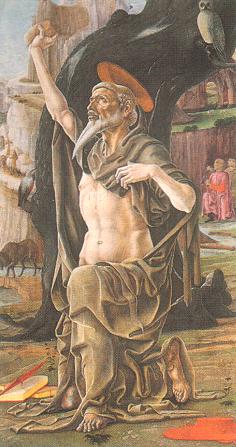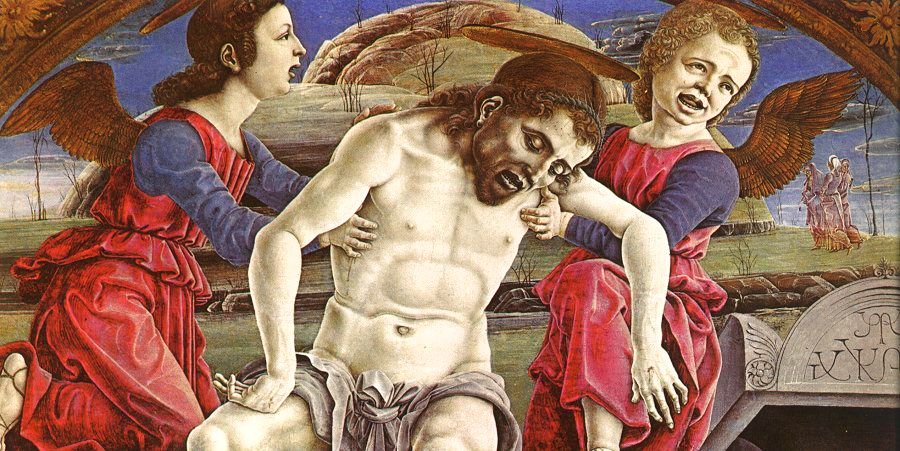Cosimo Tura (1430 – 1495)
Get a Cosimo Tura (1430 – 1495) Certificate of Authenticity for your painting (COA) for your Cosimo Tura (1430 – 1495) drawing.
For all your Cosimo Tura (1430 – 1495) artworks you need a Certificate of Authenticity (COA) in order to sell, to insure or to donate for a tax deduction.
Getting a Cosimo Tura (1430 – 1495) Certificate of Authenticity (COA) is easy. Just send us photos and dimensions and tell us what you know about the origin or history of your Cosimo Tura (1430 – 1495) painting or drawing.
If you want to sell your Cosimo Tura (1430 – 1495) painting or drawing use our selling services. We offer Cosimo Tura (1430 – 1495) selling help, selling advice, private treaty sales and full brokerage.
We have been authenticating Cosimo Tura (1430 – 1495) and issuing certificates of authenticity since 2002. We are recognized Cosimo Tura (1430 – 1495) experts and Cosimo Tura (1430 – 1495) certified appraisers. We issue COAs and appraisals for all Cosimo Tura (1430 – 1495) artworks.
Our Cosimo Tura (1430 – 1495) paintings and drawings authentications are accepted and respected worldwide.
Each COA is backed by in-depth research and analysis authentication reports.
The Cosimo Tura (1430 – 1495) certificates of authenticity we issue are based on solid, reliable and fully referenced art investigations, authentication research, analytical work and forensic studies.
We are available to examine your Cosimo Tura (1430 – 1495) painting or drawing anywhere in the world.
You will generally receive your certificates of authenticity and authentication report within two weeks. Some complicated cases with difficult to research Cosimo Tura (1430 – 1495) paintings or drawings take longer.
Our clients include Cosimo Tura (1430 – 1495) collectors, investors, tax authorities, insurance adjusters, appraisers, valuers, auctioneers, Federal agencies and many law firms.
We perform Cosimo Tura art authentication, appraisal, certificates of authenticity (COA), analysis, research, scientific tests, full art authentications. We will help you sell your Cosimo Tura or we will sell it for you.

Cosimo Tura also known as Il Cosmè or Cosmè Tura, was an Italian early-Renaissance (or Quattrocento) painter and considered one of the founders of the School of Ferrara. Born in Ferrara, he was a student of Francesco Squarcione of Padua. Later he obtained patronage from both Dukes Borso and Ercole I d’Este. By 1460, he was stipended by the Ferrarese Court. His pupils include Francesco del Cossa and Francesco Bianchi. He appears influenced by Mantegna’s and Piero della Francesca’s quattrocento styles.

In Ferrara, he is well represented by frescoes in the Palazzo Schifanoia (1469-71). This pleasure palace, with facade and architecture of little note, belonged to the d’Este family and is located just outside the medieval town walls. Cosimo, along with Francesco del Cossa, helped produce an intricately conceived allegorical series about the months of the year and zodiac symbols. The series contains contemporary portraits of musicians, laborers, and carnival floats in idyllic parades. As in Piero della Francesca’s world, the unemotive figures mill in classical serenity.

He also painted the organ doors for the Duomo showing the Annunciation (1469). He collaborated in the painting of a series of “muses” for a studiolo of Leonello d’Este, including the allegorical figure of Calliope at the National Gallery (see image). While the individual attributions are often debated, among the artists thought to complete the Angelo di Pietro da Sienna, also called Maccagino or Angelo Parrasio, and Michele Pannonio.
Selected works • Saint George – San Diego Museum of Art
• Pieta (c. 1460) – Museo Correr, Venice
• The Martyrdom of Saint Maurelius (1470s) – Pinacoteca Nazionale, Ferrara
• The Circumcision of Christ (1470s) – Isabella Stewart Gardner Museum, Boston
• Madonna and Child (1455) – National Gallery of Art, Washington D.C.
• Portrait Eleonora d’Aragona, Duchess of Ferrara – Pierpont Morgan Library, New York
• Spring or the muse “Calliope” (1460) – National Gallery, London.
• The Princess (1470) – Museo del Duomo, Ferrara.
• St. George and the Dragon (c. 1470) – Museo del Duomo, Ferrara)
• Madonna Enthroned (1474) – National Gallery, London)
• St. Sebastian – Gemäldegalerie, Dresden, Germany)
• St. Dominic – Uffizi, Florence
• Pietà, (Louvre)
• St. Anthony of Padua Reading – Louvre, Paris
• Pietà (c. 1472) – Museo Correr, Venice
• Lamentation (c. 1472) – Roverella altarpiece
• Letter A miniature from choirbook (Metropolitan Museum, New York)
• Frescoes at the Palazzo Schifanoia, Ferrara

Reviews
1,217 global ratings
5 Star
4 Star
3 Star
2 Star
1 Star
Your evaluation is very important to us. Thank you.
